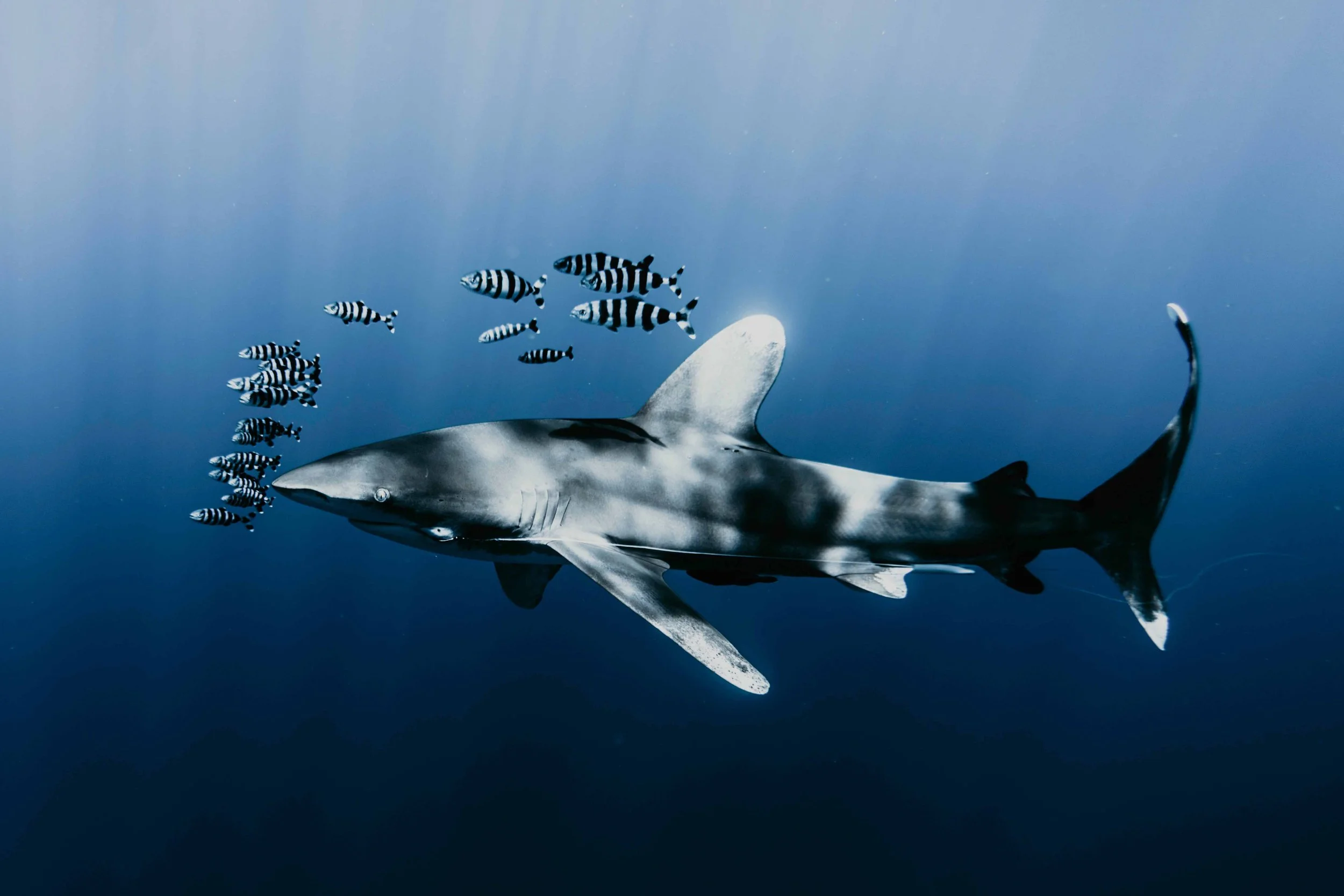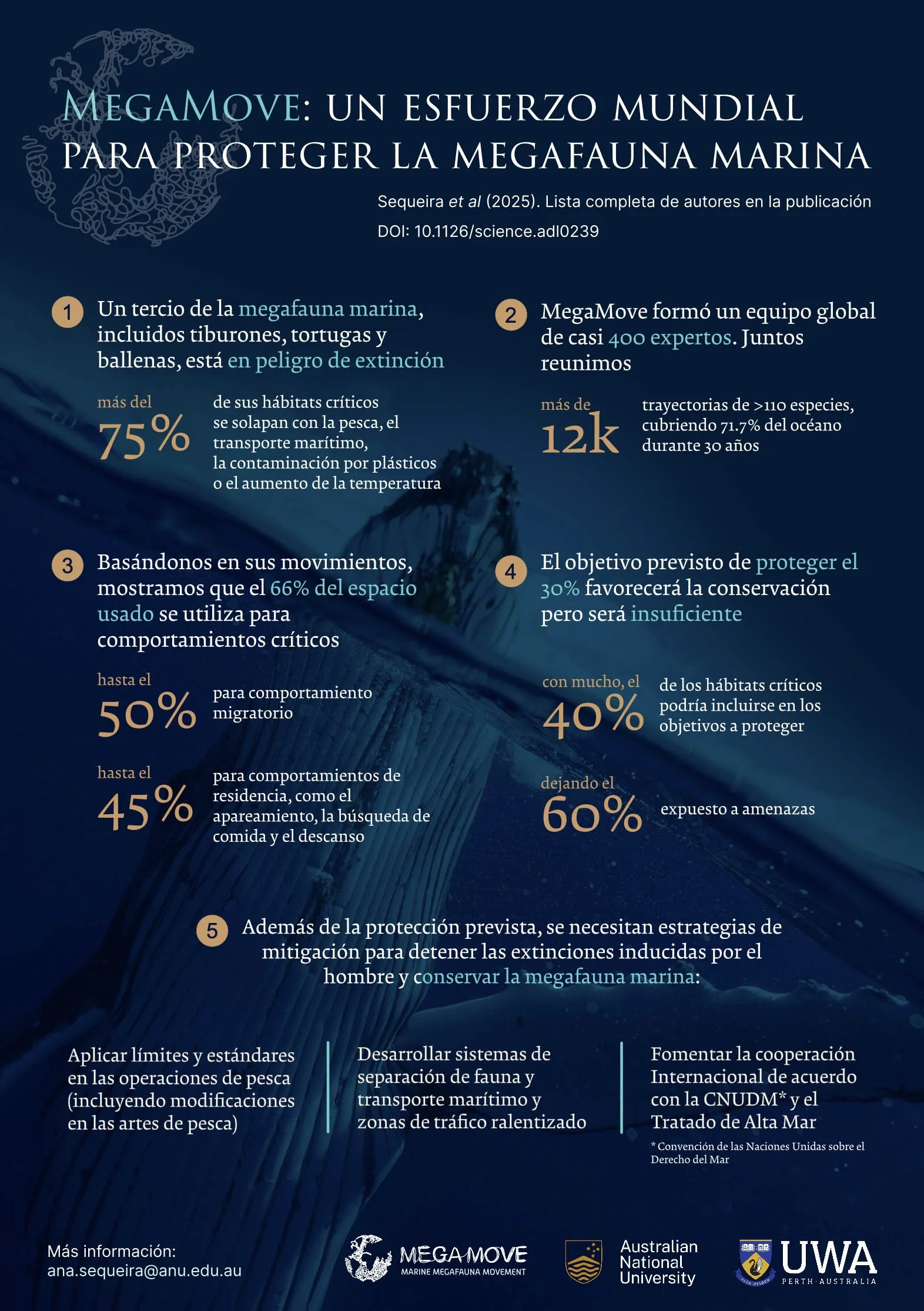Global tracking of marine megafauna space use reveals how to achieve conservation targets
Photo Credit: © Daniel Torobekov
Global tracking of marine megafauna space use reveals how to achieve conservation targets
Multi-author consortium including contributions from Mauricio Hoyos-Padilla and James T. Ketchum
Science, Vol 388, Issue 6751 (2025)
DOI: https://doi.org/10.1126/science.adl0239
Abstract
The recent Kunming-Montreal Global Biodiversity Framework (GBF) sets ambitious goals but no clear pathway for how zero loss of important biodiversity areas and halting human-induced extinction of threatened species will be achieved. We assembled a multi-taxa tracking dataset (11 million geopositions from 15,845 tracked individuals across 121 species) to provide a global assessment of space use of highly mobile marine megafauna, showing that 63% of the area that they cover is used 80% of the time as important migratory corridors or residence areas. The GBF 30% threshold (Target 3) will be insufficient for marine megafauna’s effective conservation, leaving important areas exposed to major anthropogenic threats. Coupling area protection with mitigation strategies (e.g., fishing regulation, wildlife-traffic separation) will be essential to reach international goals and conserve biodiversity.
Keywords
Telemetry, Migration corridors, Marine Protected Areas, IMMegAs, Marine megafauna



